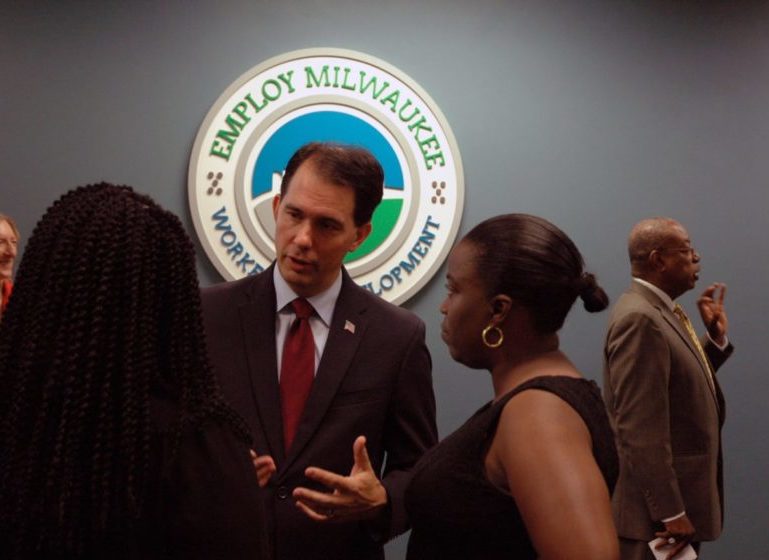Gov. Scott Walker, along with city and county leaders, announced a $4.5 million plan Friday to provide visible and tangible response to unrest in the Sherman Park area and what the governor described as “unacceptably high levels of unemployment.”
“We want to have a renewed, positive partnership, not only with the leadership, but with the people here in Milwaukee and Milwaukee County,” Walker said.
The plan calls for $2 million to go towards the rehabilitation or demolition of blighted and foreclosed properties, $1.5 million in Temporary Assistance for Needy Families funds from the Department of Children and Families for employment programs and $1 million in Wisconsin Fast Forward funds from the Department of Workforce Development for job training programs.
Walker described the plan as a “down payment” and said additional steps would be taken. While those future steps could focus on helping start, retain and attract businesses to the city, Walker said the initial plan represented what is possible without legislative action. He also said it was important to build a strong workforce to help attract businesses.
Milwaukee mayor Tom Barrett joined Walker at the press conference announcing the plan. The mayor said more than 70 percent of southeastern Wisconsin’s low income residents live in Milwaukee, the second highest concentration in the nation.
“Some say, ‘well, that’s your problem, that’s the city’s problem.’ And my response to that has been ‘no, this is our problem,’” Barrett said. “Because we as a society have to decide what is going to happen to low income people.”
The mayor also said he appreciated the willingness of state and federal officials to help in the wake of unrest earlier this month. He said the city doesn’t have the resources to handle the issues on its own, but also recounted seeing disinvestment in the city after unrest in the 1960s.
“I am resolved not to allow that disinvestment to occur again,” he said.
The heart of the plan focuses on two major efforts. The city plans to use money the state received from the foreclosure crisis settlement to train residents to rehabilitate or demolish blighted properties. Barrett said there are about 500 vacant buildings in the 10 census tracts around Sherman Park and the 30th Street corridor, about 200 of which are city owned.
“There are visual signs of the poverty in the city, and most of them, as you drive down the streets, are the houses themselves,” Barrett said.
The other main initiative included in the plan is for the Department of Workforce Development to use mobile service centers to take its services into neighborhoods. The centers provide assessment, resume building, job search opportunities and connections to other programs. DWD Secretary Ray Allen said the centers, which previously were used with the Department of Corrections, would have variable hours and would not limit the department’s current offerings.
“This is really about taking it to the streets,” Walker said. He noted that faith leaders he’d met with in the last two weeks suggested the community needed to see something actually being done.
Milwaukee County Executive Chris Abele said it was great to have so many leaders from different areas of government discussing issues of poverty and job training. He encouraged members of the media and community to continue to focus on those issues.
“Hold us all accountable for following up and making real actions,” Abele said.





